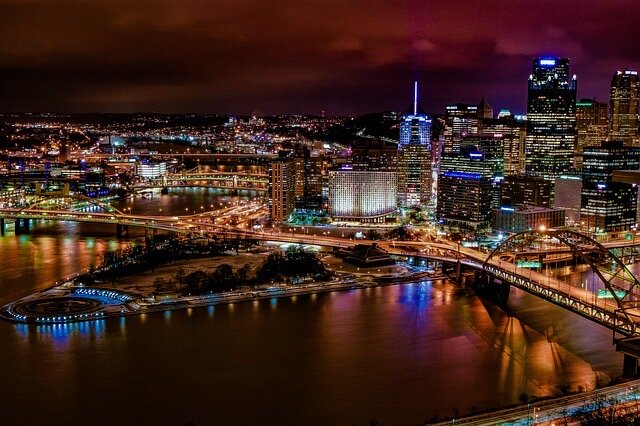Pittsburgh, in recent years, has become a bastion for the film industry, a second Hollywood. Its luring tax credit has brought hit movies like Fences, The Dark Knight Rises, The Avengers, and Jack Reacher. Few, however, have been able to bridge the city’s singular topography to the plot’s fulcrum, and even fewer have ventured to seize its essence – the idea of Pittsburgh.
Striking Distance, the critically panned Bruce Willis vehicle of 1993, attempted it, embracing the city’s three rivers as the chilling dumping ground of a ruthless serial killer, but its plot ran shallow with many fans and critics. Then in 2012, came the film adaptation of Stephen Chbosky’s 1999 debut novel, The Perks of Being a Wallflower, which captured the spirit of the city.
Chbosky, a Pittsburgh native, had a unique understanding of the experience most South Hills residents have when entering the Steel City.
To South Hills’ denizens, Pittsburgh could be considered a city meant to stay secret. To reach it, many citizens travel nearly a mile through a mountain and then across one of the hundreds of protracted bridges. Aerial views overlooking Pittsburgh’s Point give the impossible impression of the city as an island – secluded, separated by the rivers. And that’s where Chbosky’s adaptation for the silver screen attempts to define not only the essence of the “City of Bridges,” but also to link the city uniquely with its introverted protagonist, Charlie, a character who is seemingly an island unto himself.
The Perks of Being a Wallflower, starring Logan Lerman, Emma Watson, and Ezra Miller, tells the story of Charlie and his meandering ideas, friendships, and experiences as a high school freshman in 1991-92. Despite some gripping scenes, the movie’s takeaway continues to be “the tunnel scene,” where Charlie and two other high school misfits drive through the Fort Pitt Tunnel to experience the rapturous entry into the city – first, as Emma Watson’s character Sam stands in crucifixion pose at the back of a truck while listening to David Bowie’s “Heroes,” and later similarly by Charlie as the film ends. The scenes undoubtedly lend credence to The New York Times’ claim that it is “the best way to enter an American city.”
Acting as a motif, a recurring idea in a work, the entry into the city is underscored by almost 1,800 light fixtures posing as a runway before something magical. That magic is the appearance of the city “the end of a “vacuum,” as Chbosky describes it in his novel. The tunnel magically spits out each vehicle into one of the most beautiful vistas in the nation.
The tunnel of magic motif gives way to Pittsburgh’s stunning skyline, which was once so polluted it was referred to as the “City of Smoke.” This “renaissance” proves central to the character Charlie, a self-proclaimed wallflower. Charlie also has the power to reinvent himself and surprise others with his beautiful soul.
Like the glowing tunnel, Charlie recalls a similar light formation denying the darkness as a child -a luminaria arranged in his neighborhood which his mother, whose death leaves an unfillable void for Charlie, describes as a “landing strip for Santa” - the magic and moment just before you believe in the unbelievable.
The film ends with Charlie claiming that he feels “infinite” exiting the tunnel while sharing the moment with his best friends. Although it is terse and doesn’t cover the numerous charming corners of the city, it does capture its essence…the impression of Pittsburgh that lies beyond a one mile stretch of lights giving way to infinite, endless possibilities.
Rarely, if ever, has a film captured its setting so completely. Perhaps it takes the perks of living just outside the city and never letting go of the wondrous teenage mind – where everything seems infinite.
Eric Magliocca is a teacher in the Upper St. Clair School District. He is the author of The Red Triangle, available on amazon.com in paperback and eBook. It is also available at barnesandnoble.com.








